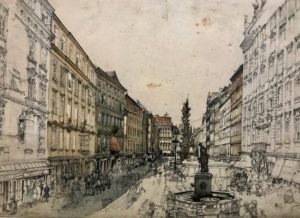How we see the world
We think about, or sometimes try not to think about, how quickly the world is changing around us. I am talking about technology. This is a subject about which I am profoundly ignorant. But I have opinions, dammit!
Every day we are asked to update something (yesterday’s version being, so, you know, yesterday). Every day there are new Apps (like Run Pee, which tells you when you can run and pee without missing an important moment in the movie you are watching). Every day there are new gadgets, new devices. Just 20 years ago I carried a camera, an audio recorder, a note pad, a pen, a little telephone number book, maybe a map, often a pedometer. I wore a watch. My computer sat on my desk next to my telephone answering machine. I had to brush my teeth with a twig. Okay, not that.
Now I have one device—the Austrians call it a “handy,” and it is—that does all of that, and more. That is a huge change. And a fast change.
Yesterday I was reminded of a change I hadn’t really thought about that is far more profound: the change in how we get the images that we hold in our heads. Of course we form those images through seeing, through direct experience. But we also “see” by looking at the images others present us. Today, we see the world through Google images or through posts on Instagram or Facebook, YouTube, satellite pic sites, someone’s blog. We can see everywhere and anywhere, a click, a split-second: Here is the spice market in Istanbul. Here is the Vatnajökull glacier. Here is the backyard of the house I lived in as a child that I have not visited for thirty years.
But what about before the Internet. What about before photography? How did people “see” what they did not experience?
The Aquarell (watercolor) exhibit at The Albertina Museum had one answer for this. Many of the paintings in the exhibit were delicate, evocative, almost ethereal, the way watercolor can be. But the subtext is what interested me. Some of these painters were engaged by adventurers, noblemen and others to document their journeys. The painters used water color—first sketching with pen and ink, then adding color later—because this was a fast way to make a picture, to capture an image: a Parisian street corner, an alpine glacier, a “Gypsy” encampment. They brought the images back as visual records. It is how others saw those distant places. Imagine that.
Imagine never having left your village in Tyrol. Imagine now a trip to Vienna, once in a lifetime. There you see the work of a watercolorist who traveled with a noble across the European continent and chronicled what he saw. Painted it. Those luminous, delicate, evocative images are how you now experience that place. Imagine. I almost can’t.







0 comments
Kick things off by filling out the form below.
Leave a Comment